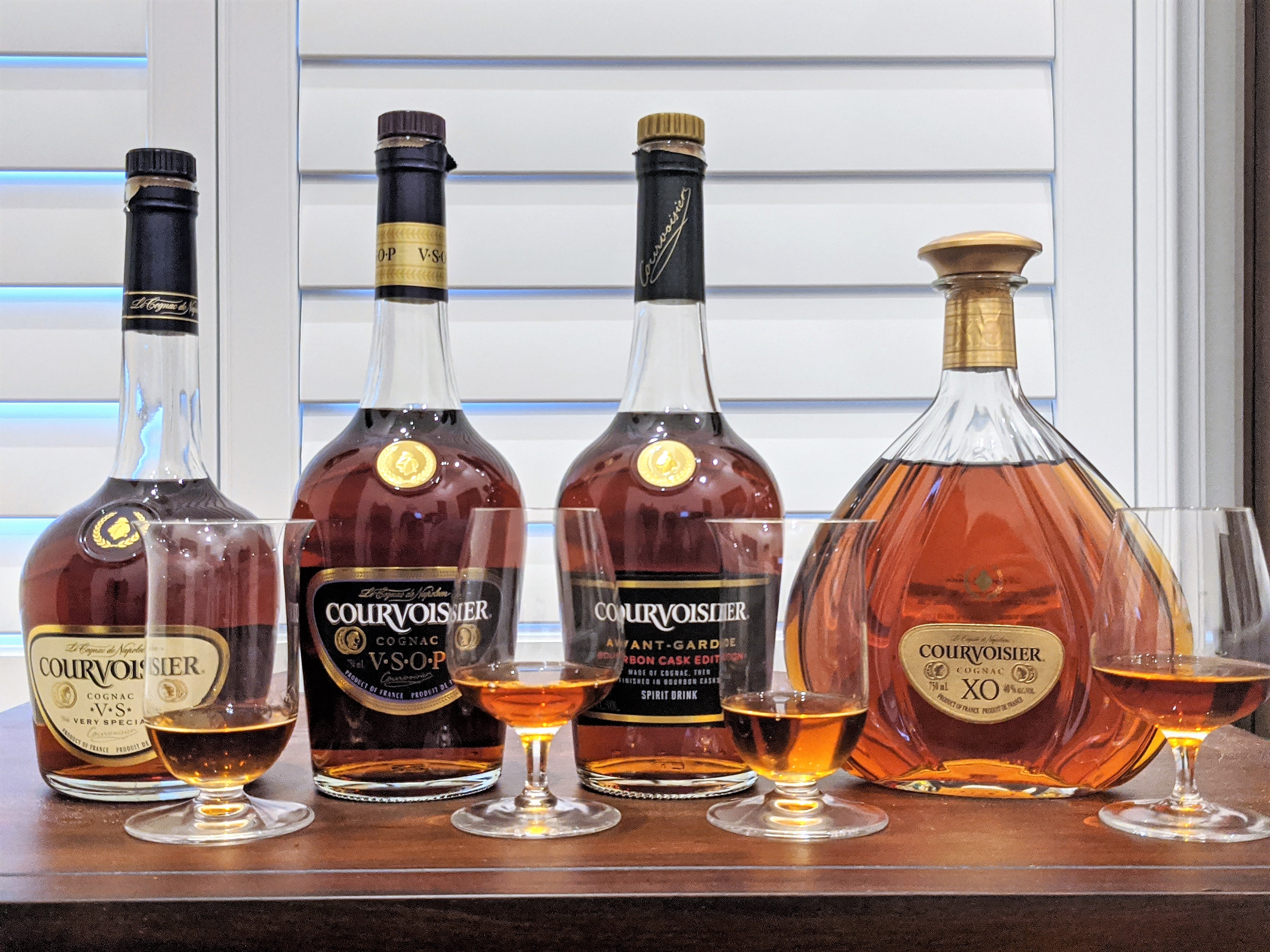Courvoisier Tasting & A Walk Down Memory Lane to Cognac Country
One of the best and most formative ventures of my early booze journalism days was a DISCUS (Distilled Spirits Council) trip to Cognac, France. We visited all of the region’s prestige houses, including Hennessy, Martell, Courvoisier and Remy Martin, in addition to a number of small winegrowers, or bouilleurs de cru, and the Baron Otard Château de Cognac, which now produces D’USSE.
The trip was lavish to the point of ridiculous excess, as we stayed at the swanky chateaus of the brands, and visited each producer’s paradis cellars, tasting ancient eaux-de-vie, in some cases from the mid-19th century. There is, obviously, nothing quite like it.
With the current climate being what it is, there aren’t any planned group booze trips to Cognac, France on the docket. However, it’s easier than ever to visit the region from your computer with virtual meetings. A recent Courvoisier session offered an exciting opportunity to revel in some of those memories while tasting through a portion of their current lineup.
It was also a chance to see what’s new with the brand, including their Avant-Garde Bourbon Cask. The product can’t be labeled as a “Cognac,” due to the cask-finishing process which uses bourbon barrels made from American oak. Cognac regulations stipulate that only French oak barrels from Limousin or Tronçais can be used for maturation, and further, that the barrels must only have held grape-based products. As such, the product is labeled as a “Spirit Drink” which is “made of Cognac.”
Considering Courvoisier is in the Beam Suntory family, it should be a given where the bourbon barrels come from: Jim Beam. Fred Noe’s signature even appears on the back label, alongside Courvoisier’s master blender, Patrice Pinet, and master distiller, Benoit de Sutter.
Specifically, though, Knob Creek barrels are used for Avant-Garde. The liquid includes components matured for between two and eight years, with an average age of approximately four years.
Now that we know what the Avant-Garde is, what does it taste like? The nose offers some of the spicy rye and vanilla characteristics of the whiskey itself. The palate also showcases that spice, with a touch of smoke and char incorporated into its Cognac base. It also has more of an alcoholic heat to it than a typical Cognac of similar age. You could put this one to use simply on ice, or try it in a cocktail such as an Old Fashioned, for a riff on the classic.
The tasting also included a food pairing rundown starting with Courvoisier VS, its light quality and bright citrus notes matched by apricots; Courvoisier VSOP, with a slightly creamy mouthfeel and tannic oak, almonds cut into the liquid and refreshed the palate; and Courvoisier XO, a classic Borderies, replete with violets and velvety smooth on the palate, with fruit jam and a peppery back note, matched with dark chocolate. With a prestige spirit such as this XO, you can match it with anything you want or nothing it all, as long as you be sure to thrust your hand into the air to volunteer yourself for sampling duties if ever given the opportunity.
Here’s to having another chance to visit the Cognac region in the future. In the meantime, I’ll continue sipping on these.



At Jacques Brasserie, the menu is not just a list of dishes, it is a map of culinary adventures. The knowledgeable staff is always ready to help you navigate your way through the dishes to ensure that your dinner is as unforgettable as the experience itself. https://www.jacquesbrasserie.com/menu/